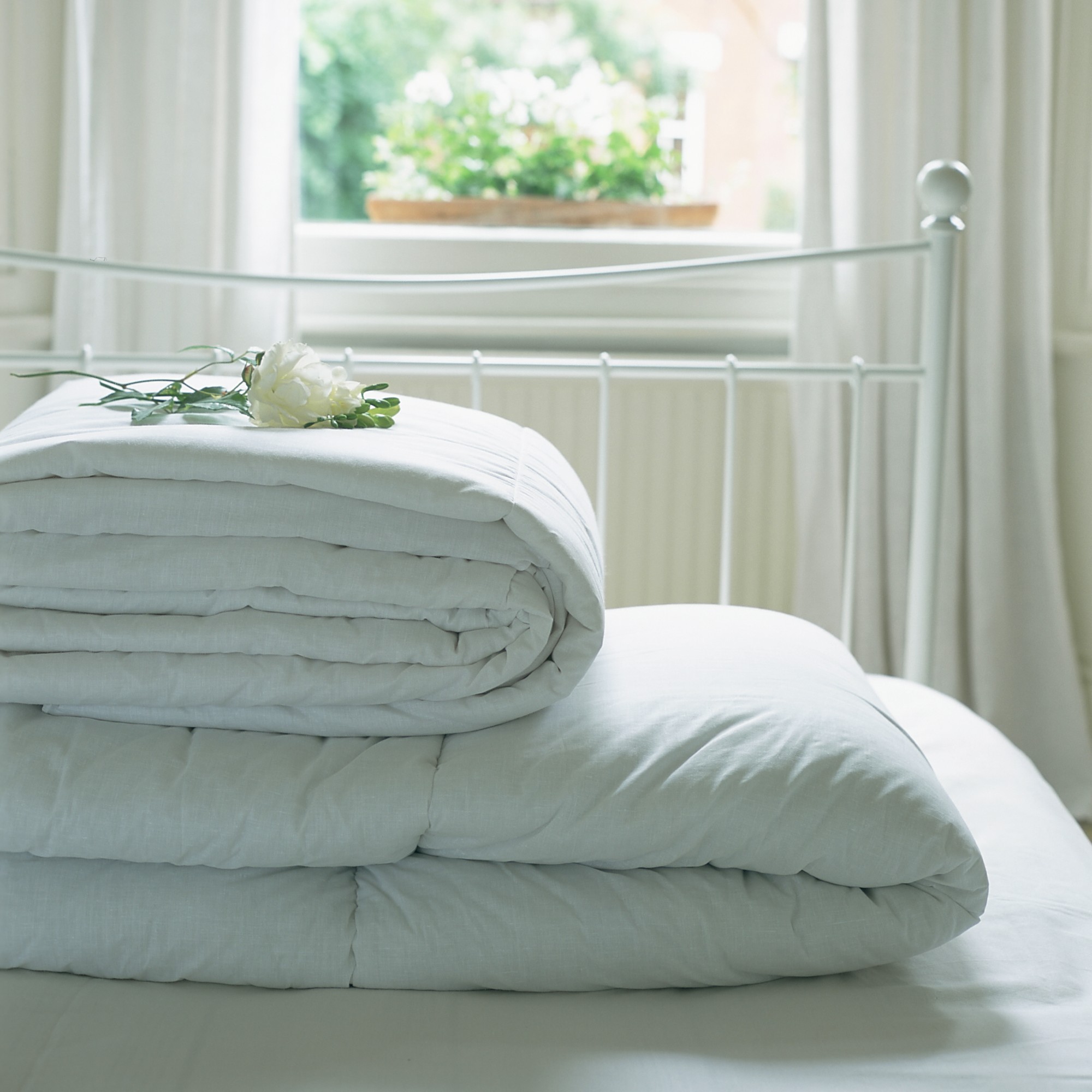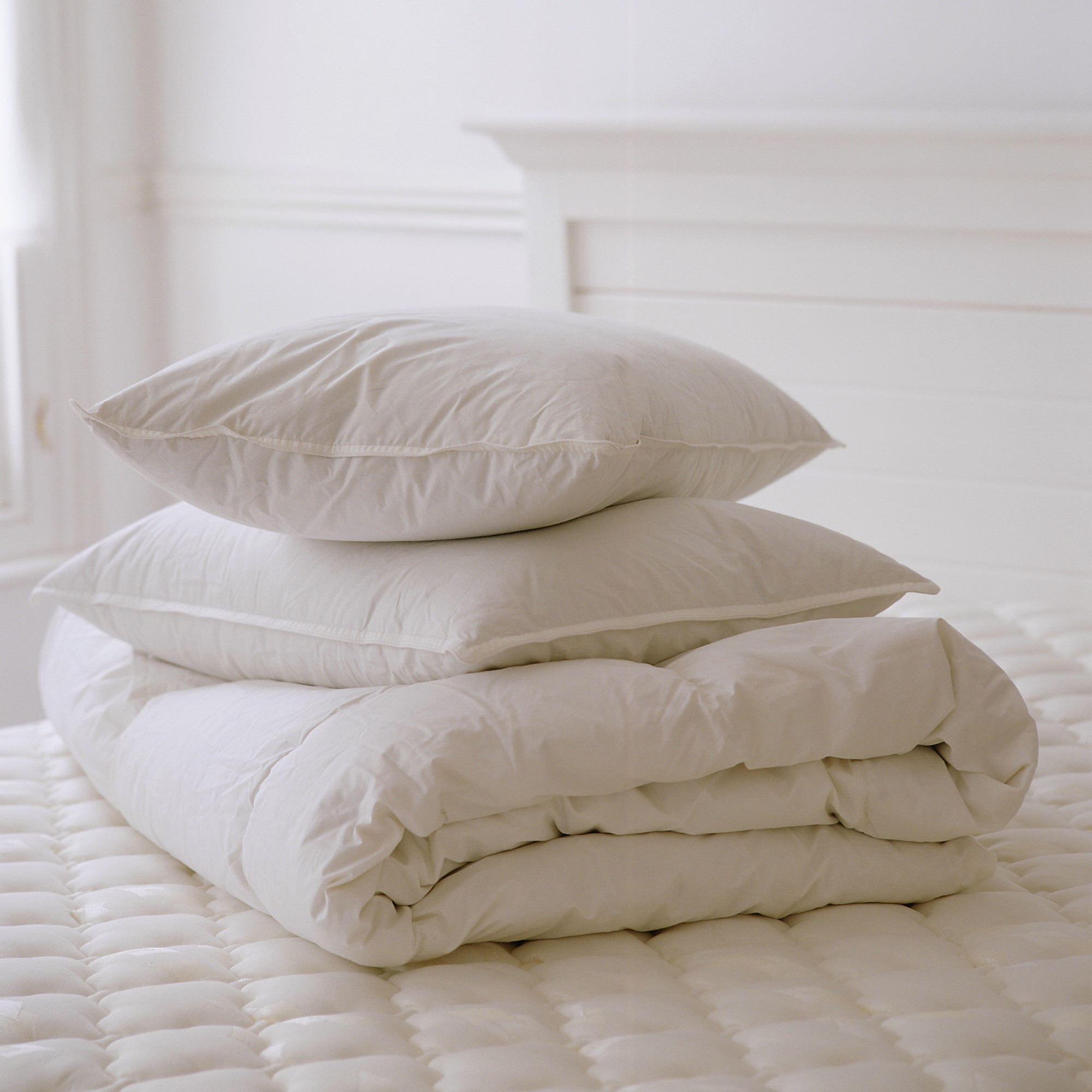
As the weather’s warming up and the beginning of summer is slowly but surely approaching, now is a good time to switch your warm winter duvet for a lighter one fit for higher temps. But before you do that, you should know some do’s and don’ts about duvet storing – and should you use vacuum storage bags for duvets or a different method?
Vacuum bags tend to be a favourite when it comes to out-of-season storage. But it turns out that it’s not ideal for storing absolutely everything, including some duvet types. So in order to avoid causing damage to your best duvets but still keep your linen cupboard organised, we’ve put together an easy, expert-approved guide of when you can use vacuum storage bags and when you’re better off without them.

Should you use vacuum storage bags for duvets?
According to bedding and storage experts, whether or not you can or should use vacuum storage bags for keeping your out-of-season duvets depends entirely on the material of your duvet. Because if you store a particular duvet incorrectly, it can lead to irreversible damage.
‘How you store your different duvets - typically for summer and winter - is just as important as regularly cleaning them,’ says Rex Isap, CEO and sleep expert at Happy Beds. ‘If you don’t store them properly, your duvet will not regain the same shape and efficiency as before and you’ll likely need to replace your duvet.’

How to store synthetic duvets
If you own a synthetic duvet, then you have nothing to worry about when it comes to storage – including putting it in a vacuum bag as it will retain its shape and just spring back up once you take it out once the weather cools again.
‘If you have a synthetic duvet, you can store your duvet in a vacuum storage bag when it comes to the change in season,’ Rex says.
Laura Haddy, APDO member and founder of Clear The Chaos Ltd, agrees, ‘I would recommend using vacuum bags for synthetic duvets. It is convenient, cheap, space saving and keeps items clean and protected from external factors like dust, moths etc.’
Rex continues to explain that knowing how to wash a duvet and properly dry it is imperative prior to storing it away. ‘If you are doing this, it’s important that your duvet has been cleaned and is completely dry before entering storage. Any moisture left in your duvet can lead to bacteria growth and even mould.’

How to store feather, down and wool duvets
Depending on your preferences and where you buy your bedding, it’s possible that your duvet is filled with feathers and down or even wool. And if that is the case, you will need to opt for an alternative storage solution to vacuum bags.
‘I would not recommend using vacuum bags if you have feather bedding as compressing feather duvets can damage the feathers thus reducing their ability to spring back and loft up,’ says Amanda Biggs, APDO's memberships director and founder of Professionally Organised.
‘Natural fibres such as wool can become damaged when compressed so are better stored in sealed bags which aren’t compressed.’

Duvet storage bags or boxes are a better alternative to vacuum bags, ideally those made of cotton. ‘For natural duvets, use a breathable cotton bag if space allows. This will prevent permanently damaging the integrity of the duvet, while keeping it protected,’ explains Laura.
A cotton bag will allow for air to circulate, which is much needed. But you might want to take some precautions to keep your bedding fresh and moth-free. ‘I always pop in a tumble sheet to help with keeping items a little fresher. And if I am storing the items in a cotton bag, rather than vacuum, I will pop a lavender bag and some moth balls in too,’ Laura advises.
And this also applies to your best pillows made with feathers and wool, of course.
Duvet storage essentials
FAQs
What size vacuum bag do I need for a king size duvet?
If you have a king-size synthetic duvet, then you can use a vacuum storage bag.
‘When looking at sizing, most show volume capacity over size, and will typically be listed as M, L or XL. A king size would need 150 to 200 litres, which is an XL. For measurements, as long as your vacuum pack is a few inches bigger than the item, it will fit,’ recommends Laura Haddy, APDO member and founder of Clear The Chaos Ltd.

What shouldn't you put in vacuum bags?
As convenient as they are, there are some things that should never be put in a vacuum storage bag. This includes duvets made of natural materials like feathers, down and wool, but there are other materials that could get damaged this way.
‘While vacuum bags are a great option for some things, there are some fabrics to avoid storing in this way – down, feather-filled items, leather, silk and lace. And airbeds or such which I do often see,’ warns Laura Haddy, APDO member and founder of Clear The Chaos Ltd.
But as long as you follow this guide, you should be all set for storing your duvets away this time of year.







